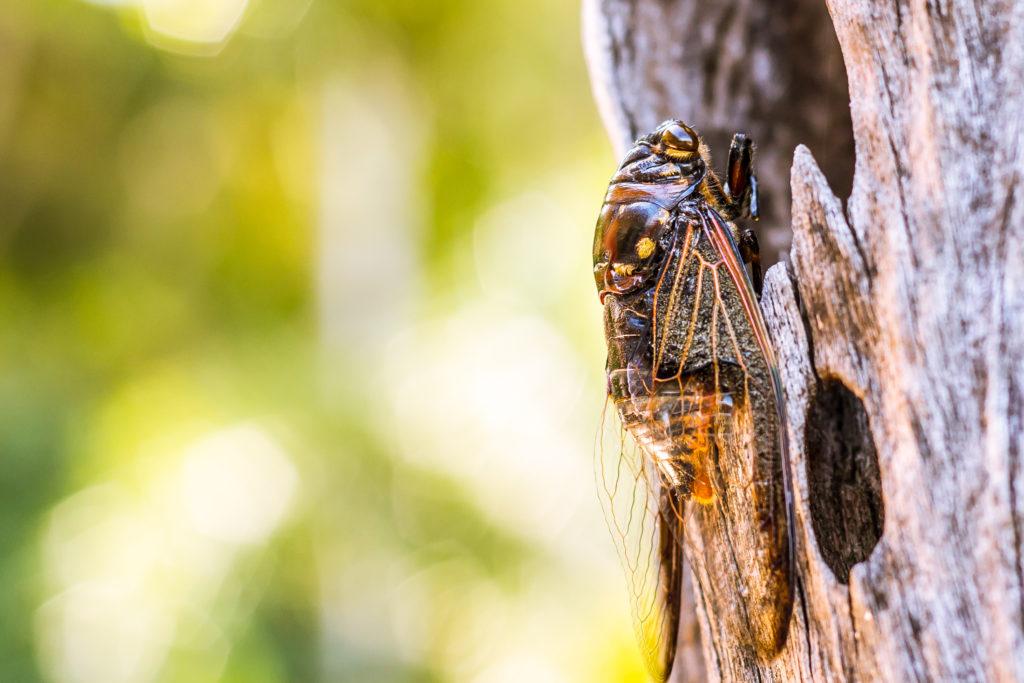A biology professor is studying the ecological impacts of an insect that will emerge underground and flood the DMV for the first time in 17 years this spring.
John Lill, the chair of the biological sciences department and a professor of biology, said the cicada, known as Brood X or “The Great Eastern Brood,” that will reemerge in the area is one of the largest periodical broods, a type of cicada that spends most of its life underground and comes up only every 13 or 17 years. He said he will spend the next few years researching how the billions of periodical cicadas – a food source for most predatory animals – will affect local food webs in eastern forests this summer.
“We’re focusing on the food webs that involve birds, that feed on caterpillars, that feed on oak trees in these Eastern forests,” he said.
Young periodical cicadas bury themselves in the ground around trees, where they feed on nutrients from tree roots as they mature into adulthood, according to National Geographic. Adult cicadas live four to six weeks above ground after digging themselves out as the ground warms to about 65 degrees.
The research team – composed of Lill, a doctoral student in the biology department, a Georgetown University professor of environmental biology and several undergraduate research assistants – will create fake caterpillars with clay to resemble the ones that birds regularly eat. They will then place the clay caterpillars in a conservation farm and research center in Maryland, Lill said.
He said researchers will analyze the number of markings on the clay caterpillars to determine birds’ diets. He said fewer beak marks would suggest that birds changed their food source from caterpillars to cicadas while a greater number of beak marks would suggest that the birds aren’t switching their diets to cicadas.
Lill said predators that eat insects will experience a growth in numbers following the cicada emergence because cicadas serve as an additional food source. He added that rats usually experience an “explosion” in their population after cicadas emerge because of the extra food that they will receive from the cicadas.
“There’s tons of other animals that will also be eating the cicadas,” he said. “Pretty much anything that can eat them will eat them when they come out, including things like foxes, possums, squirrels, chipmunks, even fish will eat them when they fall into the streams and ponds.”
Zoe Getman-Pickering, a doctoral student in biology working on the study, said the cicadas will affect each level of the food web differently. She said the team expects the caterpillar population to increase as birds turn to cicadas as a food source, leaving a higher number of caterpillars to eat leaves and cause tree damage.
She said the researchers started examining local eastern forest ecosystems in Maryland last spring to observe the environments without the cicadas. She said the team members will continue their work in the coming years to better understand Brood X’s impact on the ecosystem.
She said the team will compare the data they collected previously to their findings from this year and future years. She said the researchers hope to publish their findings in three to six papers by 2023 or 2024.
The research team also developed an educational cicada website for teachers and students, featuring free materials like cicada photos, a digital workbook and frequently asked questions and videos.
“We’re studying all the ways that that huge pulse of nutrients and food into the ecosystem changes the behavior of different animals in forest food webs,” Getman-Pickering said.
Biology experts said researchers mapping where the Brood X cicadas emerge this spring will allow them to learn more about the insects’ impact on ecosystems.
Gene Kritsky, the dean of behavioral and natural sciences and a professor of biology at Mount St. Joseph University in Ohio, said he developed an app to crowdsource and map the various Brood X awakenings occurring this year.
He said the app’s users will be able to take photos or videos of cicadas they see and upload them with a quick description. Kritsky said a group of researchers at his university then maps the submitted uploads to track where the cicadas emerge.
“The fact that every photograph is examined and verified gives us a little more value to the quality of the data that we’d have otherwise,” he said. “And that’ll provide a really solid foundation for one of the best maps of Brood X that’s ever been done.”
Michael Raupp, a professor of entomology at the University of Maryland, said students who are afraid of insects should try to learn more about the cicadas to overcome their fear.
“It is going to be a fantastic opportunity for children of all ages, from three years old to 103 years old to simply go out and witness one of the most spectacular and unique events that Mother Nature has evolved in the entire planet,” Raupp said. “It’s something that happens only a handful of times in a lifetime.”








